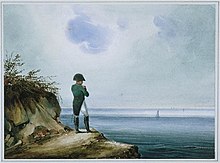The island of St Helena is about as remote an inhabited location as you can get in the whole world. Not only is it over 1000 km from the nearest continental point, but the lack of an airport means the only way on and off is via the last Royal Mail Ship, the RMS St Helena, which plies between Cape Town and Ascension Island once or twice a month, taking at least two days to reach St Helena.

Its position on the trade routes between Asia and Europe made it an important restocking island of water, goats, fruit and vegetables for passing sailing ships, and was claimed by both Dutch and English before becoming an UK Territory. Its isolated position and fortress-like geology made it the perfect exile prison for Napoleon Bonaparte.
St Helena’s inaccessible location from its volcanic origins on the mid Atlantic Ridge some 14 million years ago meant only a few faunal and floral species reached the island by their own means, and those which did have morphed into specialised varieties and multiple cross breeds. It has given St Helena some of the most important endemics and exciting landscapes in the world.
The restocking from sailing ships did a lot of damage to this landscape – goats ate the plants, termites got into the wood, new vegetable, fruit and cereal crops were brought in and competed with natural vegetation. The expansion of flax in the early 20 th Century overran areas formerly covered in the beautiful endemic cabbage trees, dwarf and giant jellicoes, ebony and redwood, and tree ferns cloud forests; ancient gumwoods were replaced by eucalyptus and pine forests.
With the collapse of flax the opportunity has come to regenerate these globally important endemic species, and mapping and Geographical Information Systems (GIS) can assist in showing how well the replanting of endemics and their management has been successful.




No comments:
Post a Comment